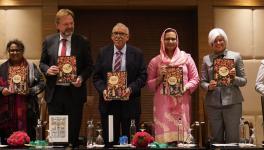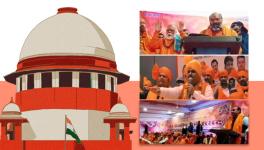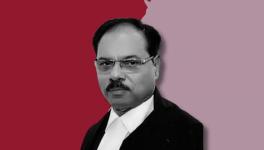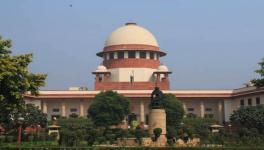Why Top Court Slapped Down Crusader Against Religious Freedom
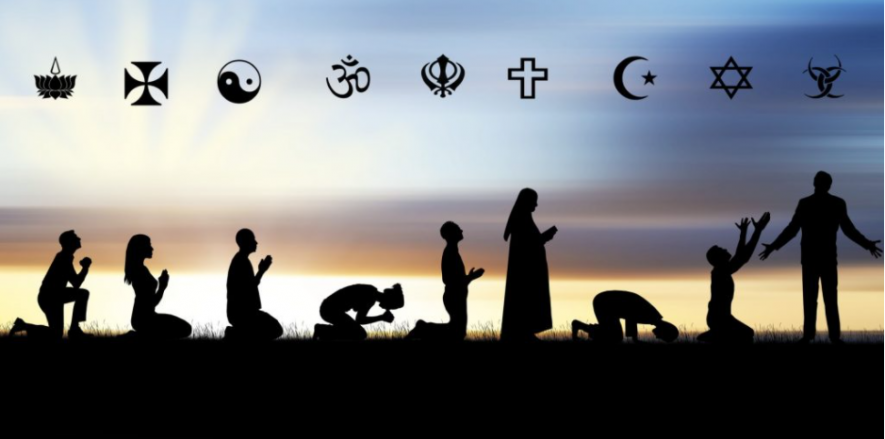
A bench of the Supreme Court threw out a petition seeking to curtail freedom of religion. It was not amused by the “public-interest” petition filed by Ashwini Upadhyay, a Bharatiya Janata Party (BJP) functionary, which sought directions from the top court to the executive asking them to control “black magic, superstition and religious conversion”.
Before we get to the curious and maladroit juxtaposition of the three “offending” practices, it would be apropos to detail what the Supreme Court bench observed. While refusing to entertain the petition on 10 April, the bench orally observed, most importantly, that every citizen who was an adult, that is over 18 years of age, had the freedom to choose his or her religion.
Furthermore, it drew the attention of the petitioner, an advocate, to the presence of the word “propagate” in the Constitution. Justice Rohinton F Nariman, one of the three judges on the bench, said, “I don’t see a reason as to why a person above the age of 18 years cannot choose his religion…There is a reason why the word propagate is there in the Indian Constitution.”
This was an obvious reference to Article 25 in Part III dealing with the “Fundamental Rights”, which provides that “subject to public order, morality and health and to the other provisions of the Part, all persons are equally entitled to freedom of conscience, and the right freely to profess, practise and propagate religion”.
The bench went further in its observations, however. It said the plea was a “publicity interest petition” and threatened to impose a heavy cost on the petitioner, before dismissing it. The counsel for the petitioner had sought leave to withdraw the petition and make a representation to the Law Commission and government.
The unfortunate part of the proceedings in the Supreme Court was that since the petition was thrown out, no order was passed. Whatever the bench may have said remain oral observations, which do not create a precedent. But they do shine a light on all manner of legislation created by the Centre and several states that are unconstitutional. I refer to numerous instances of anti-conversion legislation and the more recent laws against a non-existent phenomenon called—by vacuous Sangh parivar propagandists—“love jihad”.
We must note what Upadhyay’s petition said before being unceremoniously slapped down. “Religious conversion by ‘carrot and stick’ and ‘hook or by crook’ not only offends [against] Article 14 (right to equality), 21 (right to life and liberty), 25 (right to freedom of religion) but also secularism which is [an] integral part of [the] basic structure of [the] Constitution,” it said.
The arguments were a stretch and the bench obviously did not buy into them. But these kinds of arguments are precisely those used to justify anti-conversion legislation—at their heart is the spectre of inducement.
Let us look at the record. Anti-conversion bills have been tabled in Parliament over the past 65 years or so. It first happened in 1954, followed by instances in 1960 and 1979. They failed to be enacted each time. The BJP, like its ideological forebears, the Hindu Mahasabha and Bharatiya Jana Sangh, and other members of that octopus-like entity we call the Sangh parivar, is a votary of anti-conversion legislation.
Senior BJP leaders including Union Home Minister Amit Shah have ceaselessly batted for a federal anti-conversion law that will ban conversions without permission from the government. Failure to obtain permission will, in the projected scheme of things, invite heavy penalties. The party’s hand has repeatedly been stayed by legal opinion stating that such legislation is in the states’ domain.
Thus, a number of states have at different points of time enacted laws proscribing or severely circumscribing religious conversion. Among them have been Arunachal Pradesh, Chhattisgarh, Gujarat, Himachal Pradesh, Jharkhand, Madhya Pradesh, Odisha and Uttarakhand. Uttar Pradesh has joined the list with an ordinance to control conversion. Also in the mix are the laws or ordinances against “love jihad”, passed by Gujarat, Madhya Pradesh and Uttar Pradesh. Karnataka is pushing for one, while the BJP’s coalition partner in Haryana has seemed to successfully stymie an attempt in the state.
Anti-conversion laws and ones against the nonsensical notion of “love jihad”, disowned even by the Union Home Ministry in the Lok Sabha, are all unconstitutional, as the bench made abundantly clear. It remains for high courts or the Supreme Court to pronounce final verdicts on them.
But the premises of both the types of proscription or circumscription are faulty and farcical. In the case of “love jihad”, they involve a conspiracy theory, with international ramifications, that is lunatic and ludicrous. Let’s take one of the presumptions on which the older anti-conversion laws rest. As enunciated in Upadhyay’s petition variously as “carrot and stick”, and “by hook or crook” (sic), the fundamental idea is inducement rather than force.
The original concern was conversion by Christian missionaries who would promise material benefits as a reward for conversion. Going even by this fallacious presumption, the question is about agency. Let us assume that people were converting to Christianity for material benefits rather than to escape the oppressive Brahmanical social order, which is actually the case with most examples of conversion—to Islam, Christianity or Buddhism. Any adult individual has the right to make trade-offs within legal limits. If an indigent person decides that his and his family’s financial security, and children’s future trump questions of faith, no one has the right to question this decision.
As a matter of fact, the Rashtriya Swayamsevak Sangh (RSS) and organisations closely connected to it convert tribal people who practise animist or other religions that have no connection to Brahmanical Hinduism, precisely through allure and inducement. Ditto for reconversion (ghar wapsi), when it is not actually by force. They remain under the radar because the BJP is the parliamentary political arm of the RSS and derives ideological, programmatic and organisational sustenance from it. And because, through a systematic misrepresentation of history and social reality, Hindutva fanatics assert that tribals are actually Hindu, which is rubbish.
As mentioned, the “love jihad” fable is fantastical and lunatic, assuming, as it does, that there is an internationally funded and organised conspiracy to lure Hindu women or girls into matrimony. This is on par with, and related to, the theory that India has been going through a demographic revolution since many decades on account of higher population growth among Muslims and infiltration of Muslims from Bangladesh. The fact, of course, is that from the 1951 to the 2011 Census India’s demographic profile by religion has been more or less constant.
The bogey of “love jihad” is an instrument used to polarise the country, the citizenry and, most important, the electorate, and intimidate Muslims. Regime control not only provides the BJP its oxygen supply, it also clears the pathway to the sinister objective of building a Hindu state in which only majoritarianism and obscurantism will be allowed to flourish.
India’s democratic credentials are being increasingly questioned worldwide—by governments, international organisations, including some that are part of the United Nations. Geopolitical considerations will, however, trump all other considerations. India is unlikely to be at the receiving end of any form of sanctions anytime soon. The responsibility to rid the country of this toxic regime must rest, thus, with the Indian people.
The author is an independent journalist and researcher. The views are personal.
Get the latest reports & analysis with people's perspective on Protests, movements & deep analytical videos, discussions of the current affairs in your Telegram app. Subscribe to NewsClick's Telegram channel & get Real-Time updates on stories, as they get published on our website.









